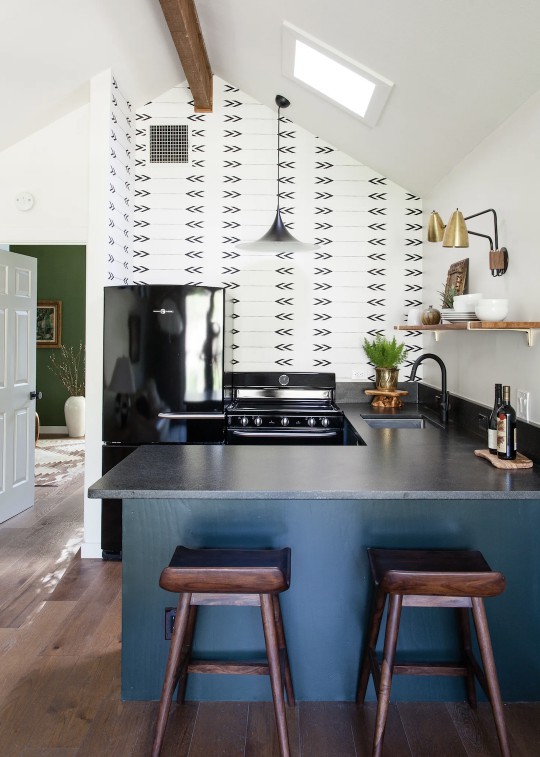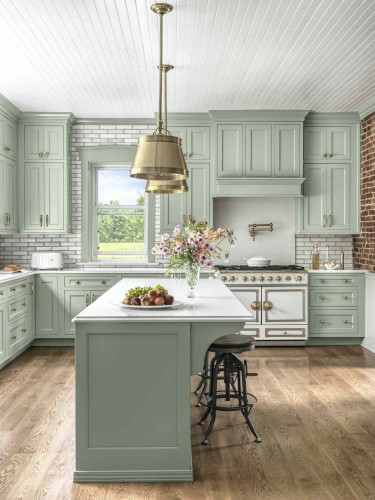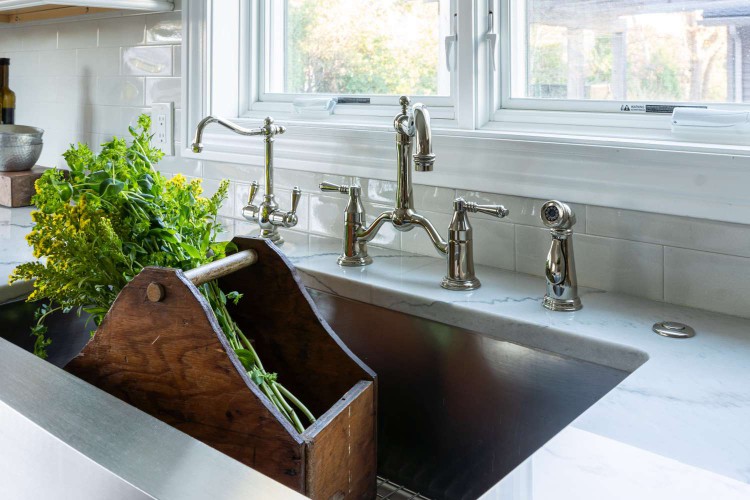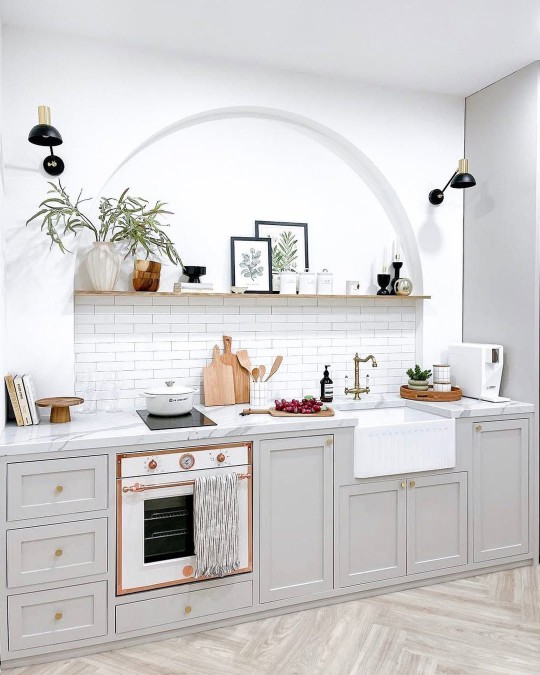Key Points
- Pros suggest finishes like matte black, glass, or enamel to add personality and warmth.
- Matte black hides smudges, glass makes small kitchens feel bigger, and enamel brings vintage charm.
- People choose these alternatives for their unique look and practical perks like durability, easy upkeep, or a naturally aging finish.
Tired of stainless steel appliances? Don't fret—there are lots of other strong possibilities to consider when it comes to options for your kitchen.
Here, two interior designers share six of their go-to stainless steel alternatives, speaking to their benefits, the kitchen styles they'd complement best, and what you need to know with regard to these materials' durability.
Meet the Expert
- Rebekah Murphy is the co-founder and architect of design at Murphy & Moore Design.
- Tehilla Bennett is the founder of Teela Bennett Design.
Matte Black

Erin Williamson Design
For a sleek, contemporary look, say yes to matte black, which "delivers a velvety, low-gloss finish that brings depth and contrast," says Rebekah Murphy, the co-founder and architect of design at Murphy & Moore Design.
Tehilla Bennett, the founder of Teela Bennett Design, also appreciates matte black.
"It’s a go-to choice for minimalist and loft-style kitchens because it makes such a strong visual statement," she says.
Don't assume that because you opt for matte black appliances means that your kitchen will be super dark, though—Murphy especially likes how this finish looks when it's paired with white cabinetry or natural materials.
In terms of durability, matte black is a great pick, too, the designer adds. While it can chip from heavy use, it doesn't show smudges as easily as stainless steel does, Murphy explains.
Want more design inspiration? Sign up for our free daily newsletter for the latest decor ideas, designer tips, and more!
Matte White
On the other end of the spectrum is matte white, which isn't glossy but instead appears soft and powdery, Bennett explains. The look complements a wide range of aesthetics, including Scandinavian, minimalist, coastal, or modern farmhouse kitchens, she adds.
"People choose it when they want a softer and lighter look that blends in with cabinetry or adds calm contrast against darker colors," Bennett says.
Given that matte white finishes are sometimes made out of enamel, scratches and chips are a possibility, Bennett shares. Powder-coated matte white appliances are more durable, though you should be careful when it comes to grease and harsh cleaners, she adds.
Unlacquered Brass

Design by Murphy & Moore / Photo by Alise O'Brien
If you're ok with a material that develops patina over time, unlacquered brass is a great option to consider instead of stainless steel. Bennett explains that the material will darken and soften with age, and as such, it's an excellent complement to farmhouse and vintage-style kitchens, "where a natural, timeworn look feels fitting."
In terms of durability over time, unlacquered brass is built to last, Bennett says. Again, she reiterates that its patina is part of the material's charm.
"Scratches or marks aren’t flaws but part of the finish’s changing character," the designer says.
Polished Nickel

Design by Teela Bennett / Photo by Caitlin Antje
If you crave a finish that's warmer in tone than stainless steel, look to polished nickel, which Bennett describes as "almost mirror-like in its brightness."
When it comes to weaving polished nickel into your home, the designer finds that the material looks wonderful in traditional or transitional kitchens, as well as glamorous spaces, and likes how it appears alongside marble or stone countertops.
"People choose polished nickel when they want a look that feels richer and more upscale than stainless steel," she says. "It adds depth, enhances light, and brings a sophisticated feel to the room."
When polished nickel has a lacquer finish, it's less likely to tarnish, Bennett shares. While she finds that it's a very durable material, do be mindful that polished nickel can easily show water spots and fingerprints show easily.
"It needs a bit more upkeep to stay sparkling," the designer says.
Glass Front or Glossy Finishes
If you really want to go mod, you should opt for a glass front or glossy finishes.
"They are ideal for modern or high-tech kitchens and complement other glossy surfaces such as polished stone," Murphy says. "Reflective and glamorous, they can also make smaller spaces feel larger."
In terms of care, you don't have to worry too much about staining and fingerprints when it comes to tempered glass. Just be mindful to avoid any sharp impacts, which can create chips, the designer explains.
Colored Enamel Finishes

@houseofchais / Instagram
Maybe a maximalist or colorful look is more your vibe, in which case colored enamel finishes are a great option to consider. They're a wonderful way to brighten up your kitchen.
"Enamel adds warmth and character," Murphy says. "Instead of blending into a sea of silver, it provides individuality and charm."
Generally, colored enamel finishes are glossy in design, and colors such as navy, green, and red are popular choices, but neutrals are also common. Try out the look in your farmhouse, cottage, or classic European kitchen, Murphy suggests.
"They can also make a bold statement in modern designs where the appliance becomes the focal point," she says.
Enamel is known to hold up well, demonstrating resistance to scratches and stains, and gives appliances the feel of heirloom furniture, Murphy says.
